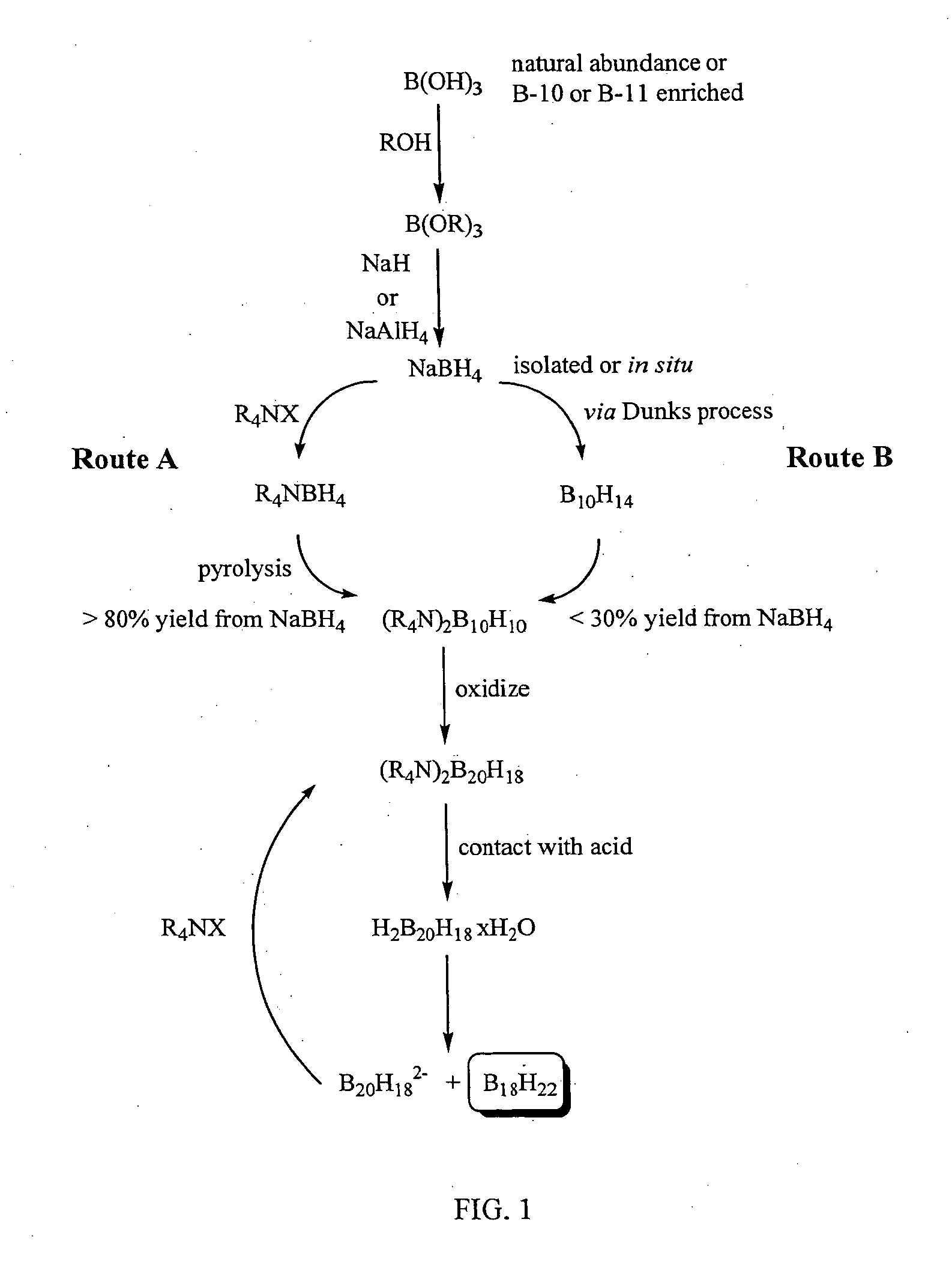Method of production of B10H102-ammonium salts and methods of production of B18H22
a technology of ammonium salts and ammonium salts, which is applied in the field of borane compounds, can solve the problems of toxic decaborane, hampered methods of manufacturing boron-doped p-type junctions, and difficult preparation of decaborane by reported synthetic procedures, and achieves high yield
- Summary
- Abstract
- Description
- Claims
- Application Information
AI Technical Summary
Benefits of technology
Problems solved by technology
Method used
Image
Examples
example 1
Preparation of 10B Tributylborate
[0091] A one-neck 500 mL round bottom flask having a Dean-Stark receiver and reflux condensor attached thereto was charged with 10B-boric acid (40 g), n-butanol (200 g), and toluene (about 100 mL). The mixture was heated to reflux and water was removed from the mixture by distillation of a toluene-water azeotrope. After removing the Dean-Stark receiver, the product mixture was fractionally distilled. 10B tributylborate was obtained as a fraction boiling at 226-228° C. under ambient pressure (195 g, 87% isolated yield).
example 2
Preparation of 11B Enriched Tributylborate
[0092] Starting with 11B enriched boric acid, 11B tributylborate was prepared according to the procedure recited in Example 1.
example 3
Preparation of 10B Enriched tris(2-methyl-2,4-pentanediolate)diborate
[0093] A mixture of 10B enriched boric acid, 2-methyl-2,4-pentanediol, and toluene were combined in a 1:1.5:1 molar ratio in a reactor having a Dean-Stark Receiver and a condenser attached thereto. The reaction mixture was heated to reflux and water generated by the condensation reaction was removed as a toluene-water azeotrope. The mixture was heated until the three molar equivalents of water had been collected in the Dean-Stark trap. The reaction mixture comprises the product 10B Enriched tris(2-methyl-2,4-pentanediolate)diborate in essentially quantitative yield and toluene. The mixture may be contacted directly with metal aluminum hydride in the next step of the metal borohydride synthesis. Alternatively, the 10B Enriched tris(2-methyl-2,4-pentanediolate)diborate may be purified by toluene removal under a reduced pressure atmosphere.
PUM
 Login to View More
Login to View More Abstract
Description
Claims
Application Information
 Login to View More
Login to View More - R&D
- Intellectual Property
- Life Sciences
- Materials
- Tech Scout
- Unparalleled Data Quality
- Higher Quality Content
- 60% Fewer Hallucinations
Browse by: Latest US Patents, China's latest patents, Technical Efficacy Thesaurus, Application Domain, Technology Topic, Popular Technical Reports.
© 2025 PatSnap. All rights reserved.Legal|Privacy policy|Modern Slavery Act Transparency Statement|Sitemap|About US| Contact US: help@patsnap.com


